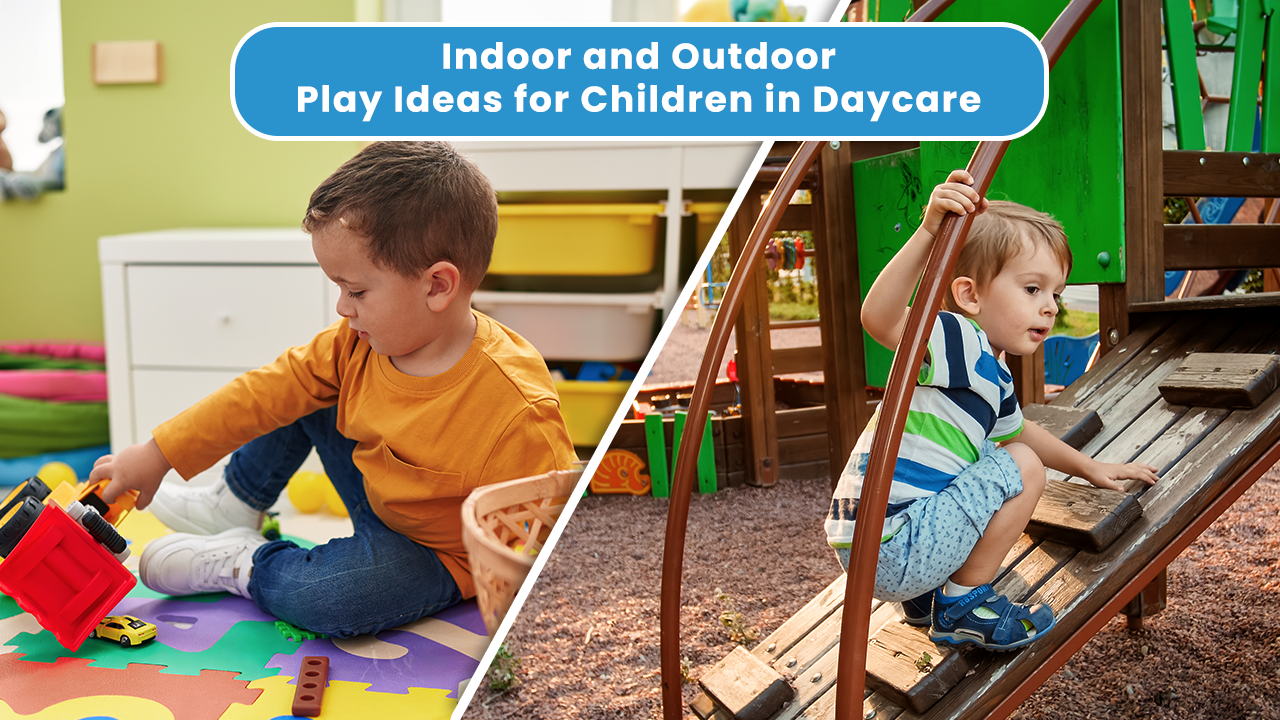
- The Importance of Feedback to Drive Better Communication in Daycares
- Strategies for Collecting Feedback to Drive Better Communication in Daycares
- Ways for Implementing Feedback to Drive Better Communication in Daycares
- How 360Daycare helps in Implementing Feedback to Drive Better Communication in Daycares
- Conclusion on Using Feedback to Drive Better Communication in Daycares
Effective communication is the linchpin of success in the bustling world of daycare centers. As these nurturing environments cater to the needs of children, the significance of clear, open channels for feedback becomes increasingly evident. Feedback acts as a guiding force, fostering trust between parents and staff while enhancing the quality of care provided. It empowers stakeholders to voice concerns, celebrate achievements, and strive for continuous improvement. This blog explores the importance of feedback to drive better communication in daycares.
The Importance of Feedback to Drive Better Communication in Daycares
Here are a few key reasons why feedback is essential in daycare settings:
Enhanced Parental Satisfaction:
Feedback mechanisms in daycares provide parents with vital channels to express concerns and provide input on their children’s experiences. This fosters trust and reassurance, as parents see their feedback valued and acted upon by daycare staff. Daycares can better align their practices with family needs by actively soliciting and responding to parental feedback, enhancing overall parental satisfaction.
Improved staff morale:
Feedback is pivotal in boosting staff morale within daycares. Recognizing staff dedication fosters a positive work environment where employees feel valued. Feedback also offers growth opportunities, empowering staff to identify areas for improvement and access resources, resulting in higher job satisfaction and productivity.
Child-Centric Focus:
Feedback enables daycares to maintain a child-centric focus by understanding children’s experiences and needs. By soliciting feedback from parents and observing interactions, daycares tailor programs to support children’s development. This ensures nurturing environments in which every child can thrive.
Continuous Quality Improvement:
Feedback drives continuous quality improvement within daycares. By collecting feedback, providers identify areas for enhancement. This data-driven approach allows daycares to remain responsive to evolving family needs, provide high-quality care, and maintain their reputation as trusted childcare providers.
Fostering Collaboration:
Feedback cultivates a collaborative environment in daycares, empowering stakeholders to contribute to decision-making and share perspectives. Daycares promote inclusivity and teamwork by actively soliciting feedback and fostering open communication and mutual respect among parents, staff, and stakeholders. This inclusive approach encourages idea-sharing and innovative solutions, enhancing the daycare experience for all involved.

Strategies for Collecting Feedback to Drive Better Communication in Daycares
Here are some strategies that daycare centers can implement to gather feedback:
1. Surveys and Questionnaires:
Structured surveys and questionnaires effectively gather comprehensive feedback from parents, staff, and stakeholders. They provide insights into various aspects of the daycare experience, facilitating informed decision-making and targeted improvements.
2. Suggestion Boxes:
Anonymous suggestion boxes offer a confidential avenue for sharing thoughts and suggestions within daycare centers. They encourage open communication and demonstrate a commitment to addressing the needs and concerns of the community.
3. Regular Check-Ins:
Scheduled meetings and informal conversations enable daycare centers to address concerns, celebrate achievements, and foster trust with parents and caregivers, nurturing a collaborative environment focused on child development.
4. Staff Meetings and Focus Groups:
Staff meetings and focus groups facilitate brainstorming, problem-solving, and knowledge sharing among daycare staff. They empower team members to contribute ideas and insights, fostering a culture of continuous improvement and professional development.
5. Digital Platforms:
Email surveys, online forums, and social media provide convenient channels for collecting real-time feedback from parents, staff, and stakeholders. Digital tools, like 360Daycare, enable prompt responses, data analysis, and tracking improvement initiatives, enhancing communication and engagement within the daycare community.
Ways for Implementing Feedback to Drive Better Communication in Daycares
Collecting feedback is only the first step; the real challenge lies in implementing meaningful changes based on the insights gathered. Here’s how daycares can effectively leverage feedback to drive improvement:
Regular Feedback Sessions:
Organize regular feedback sessions with parents, caregivers, and staff to discuss concerns, suggestions, and ideas for improvement. These sessions can be conducted through meetings, surveys, or informal discussions, fostering open communication and collaboration.
Anonymous Feedback Channels:
Implement anonymous feedback channels, such as suggestion boxes or online forms, to encourage honest and confidential input from parents and staff. This allows individuals to express their opinions freely without fear of judgment, promoting transparency and trust.
Training for Effective Feedback Communication:
Provide training to daycare staff on effectively receiving, processing, and responding to feedback. Equipping staff with communication skills and techniques helps ensure that feedback is received constructively and leads to meaningful improvements in daycare operations.
Prompt Response Mechanisms:
Establish prompt response mechanisms to acknowledge and address feedback received from parents and staff. Whether through email, phone calls, or in-person meetings, responding promptly demonstrates a commitment to listening and taking action on concerns raised.
Feedback Integration into Policies and Practices:
Integrate feedback into daycare policies and practices to inform decision-making and program development. Regularly review feedback data to identify trends, areas for improvement, and emerging issues, and adjust policies and practices to enhance overall communication and service delivery.
How 360Daycare helps in Implementing Feedback to Drive Better Communication in Daycares
Real-Time Reporting and Analytics:
360Daycare provides real-time reporting and analytics features that enable daycare administrators to track feedback trends, analyze data, and promptly identify areas for improvement. This allows for proactive decision-making and targeted interventions to address emerging issues.
Transparent Communication:
The platform promotes transparent communication by giving parents and staff visibility into the feedback they’ve submitted and the actions taken in response. This transparency fosters trust and accountability within the daycare community.
Continuous Improvement Initiatives:
360Daycare supports daycare centers in implementing continuous improvement initiatives based on feedback received. The platform facilitates stakeholder communication, allowing for collaborative problem-solving and innovative solutions to enhance daycare services.
Feedback, Training, and Support:
360Daycare offers training and support resources to help daycare staff effectively manage and respond to feedback. Daycare administrators and staff can learn how to leverage feedback to drive positive change and improve communication within their facilities through educational materials, webinars, and best practices guides.
Conclusion on Using Feedback to Drive Better Communication in Daycares
Feedback is a powerful catalyst for improving communication and fostering a culture of excellence within daycare settings. By actively seeking input from parents, staff, and children alike, daycares can cultivate strong relationships, enhance the quality of care provided, and create a nurturing environment where every child can thrive. Read also about the importance of engaging parents in the preschool learning journey.


